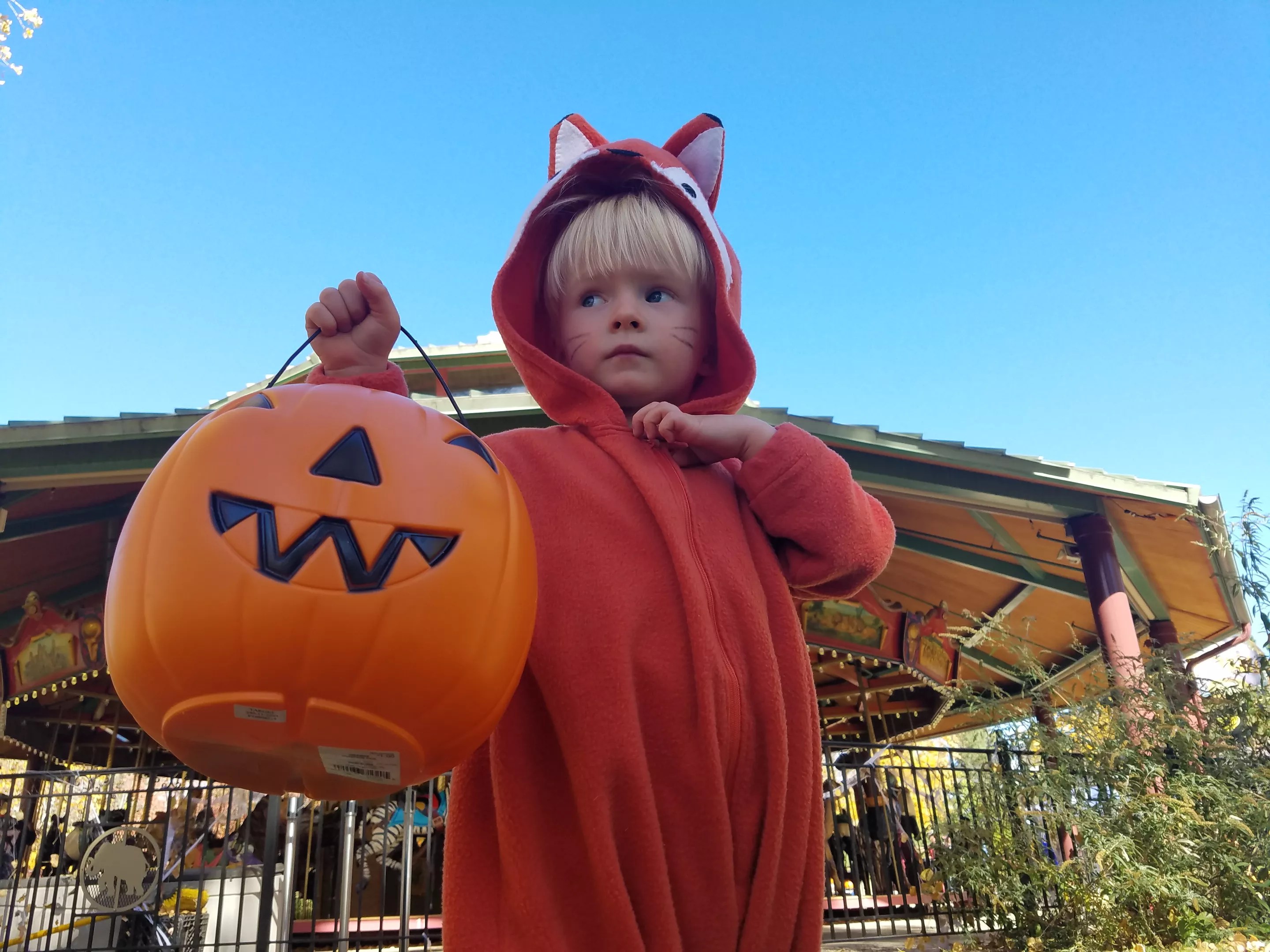
Linnea Covington

Audio By Carbonatix
Alhough Denver Public Schools will be shut down until October 16, the Denver Public Library is just starting a soft reopening, and many workers for the City and County of Denver are doing their gigs from home, Halloween is still happening. The holiday comes as coronavirus cases rise nationally and President Donald Trump, who is dealing with COVID-19, mugs as though he’s doing fine and encourages residents of the United States not to be scared.
But plenty of people are, especially as they contemplate kids and trick-or-treat activities. And so the Denver Department of Public Health and Environment has released a set of guidelines regarding what people can do to reduce their risk of transmitting or catching the virus as they celebrate Halloween. The guidelines are based on the county’s current status on the state’s COVID-19 Dial Dashboard, where Denver falls somewhere in the middle, under Safer at Home, Level 2 Concern, with enough cases to require restrictions but not enough to shut things down outright.
The DDPHE recommends that kids trick-or-treat with people they live with, and stay six feet away from other parties. Families are encouraged to take breaks between houses and use hand sanitizer; once home, everyone should wash their hands.
Even with precautionary procedures in place, safety is not guaranteed. While you probably won’t find the legendary razor-blade-in-a-Tootsie Roll that families fret about most years, you could catch or spread the virus.
“Know that visiting people from another household or staying close together for hours brings with it a risk of virus transmission,” the DDPHE statement reads. “The more households you visit, the greater chance germs may spread and linger. Also, those who are immune compromised or not feeling well should not participate in any activities and avoid visitors.”
In other words: Trick-or-treat at your own risk.

Stay safe out there.
Elitch Gardens
For households wondering whether they should give out candy this year, the DDPHE advises: “Handing treats out at the door is a low-risk activity. Be sure to wear masks and use hand sanitizer. Avoid having lots of little hands reaching inside a bowl or leaving a bowl outside your door. You also can provide a table with treats spaced out. This keeps contact to a minimum. The main point is to limit your interaction with others as much as possible. Also, it won’t hurt to disinfect your doorbell, buzzers, or other high-touch surfaces outside your home at evening’s end.”
The most important thing people can do to stay safe is wear protective masks, DDPHE guidelines state. That means they cover noses and mouths.
“Costume masks are not a substitute for cloth face-coverings unless they are made from two or more breathable fabric layers that cover the nose and mouth, with no gaps around the face,” DDPHE notes. “Wearing a costume mask over a cloth face covering may make it hard to breathe. Instead, consider a Halloween-themed cloth face-covering as part of the costume. Kids two years and younger are not required to wear a face covering, but everyone three years and older must wear one unless they cannot medically tolerate it.”

Mask up, Pooh, and stay six feet away from other parties this Halloween.
Miles Chrisinger
Planning to party? The DDPHE recommends that you stay outdoors and don’t gather in groups of more than ten people. Remember to maintain social distancing and avoid buffets, as well as shared foods and drinks.
As for that “Monster Mash” sing-along? Just say no. “Also, avoid karaoke, since singing more easily spreads the virus,” the DDPHE notes.
While haunted houses are still in business, the city is offering guidelines for them, too.
“The businesses that deliver fright must limit capacity,” the DDPHE states. “They must strictly enforce proper social distancing between groups. All surfaces and touch points must be regularly sanitized. All visitors must wear face coverings. All staff must wear face coverings and have their temperature screened. With capacity limitations in place, make a reservation to assure you get in the door before the event sells out for the night.”
None of these recommendations are fixed in stone. If Denver’s pandemic status rises on the state’s COVID-19 Dial Dashboard, the DDPHE could put more restrictions in place. Until then, it advises:
“Have fun, be safe, and hopefully, you’ll only be scared by the ghosts and goblins enjoying the night.”